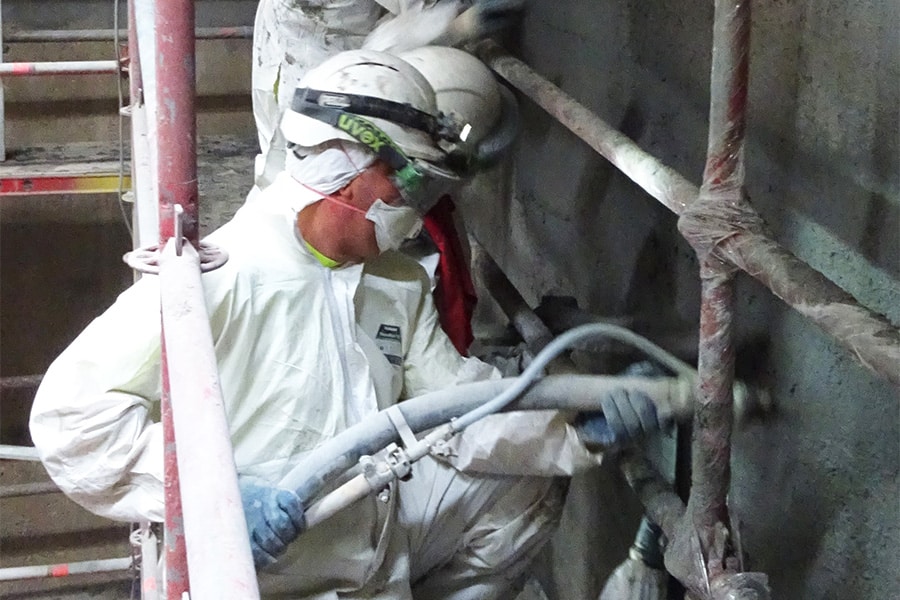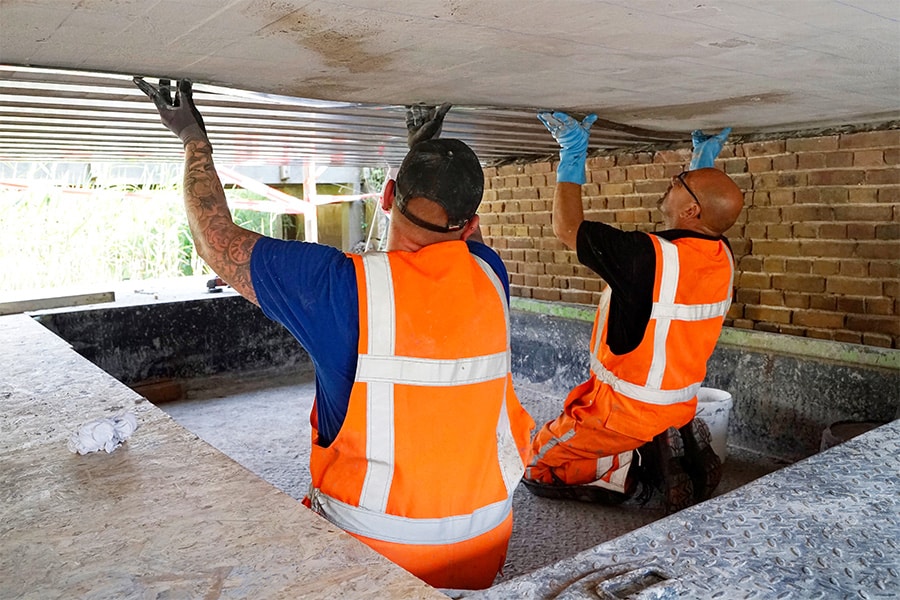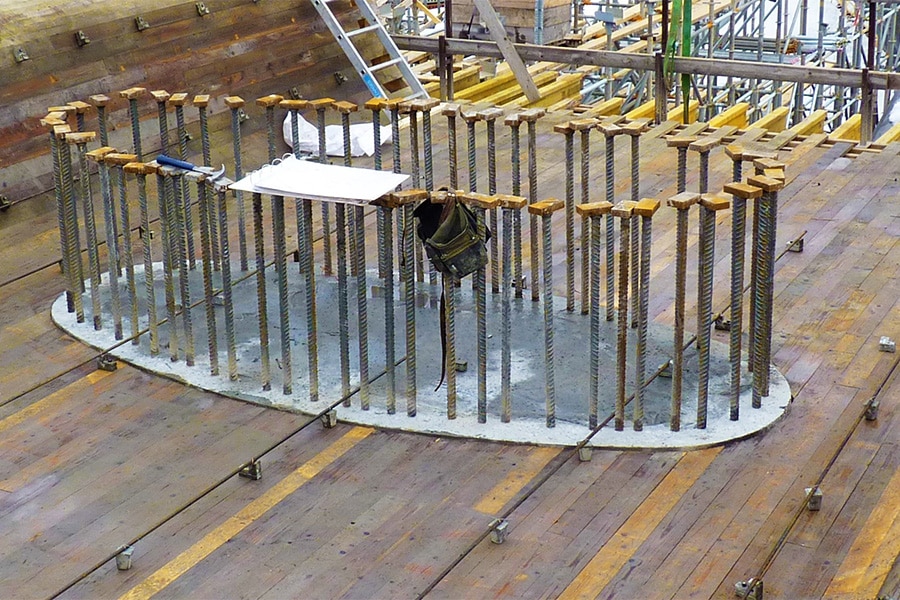
The (many) applications of T-headed rebar
T-headed bars have existed as a reinforcement product for several decades. In recent years, their use has increased significantly. T-headed bars are considered a versatile tool to solve design problems and installation challenges on the construction site - such as dense reinforcement. More and more Dutch designers and contractors are applying them for various purposes.
In essence, T-headed rebar is equipped with a mechanical anchor device at one or both ends. The mechanical anchoring device (the T-head) not only replaces anchor lengths, hooks or bends, but can provide additional benefits for structural performance and/or casting conditions. In addition, it improves the working environment for steel braiders. The following is a brief overview of typical applications with T-headed bars.

Final anchoring of longitudinal reinforcement
Anchoring by T-heads provides the shortest possible anchoring length - provided the T-head type has sufficient anchoring capacity. The rebar, normally used for anchoring length, hook or bend, is replaced by a T-head end component. This saves material and labor. Large diameters of rebar (25-40 mm) require large bending radii that take up a lot of space in the structure. Sometimes people choose the alternative of multiple smaller diameter bars. Since T-head bars are not tied to a prescribed bending radius, they offer more freedom in choosing the diameter of the rebar. Another advantage of T-head bars is that they improve site conditions for steel braiders, since bent bars often constrain their working space and impede their movement. This can be easily avoided by using T-head bars.
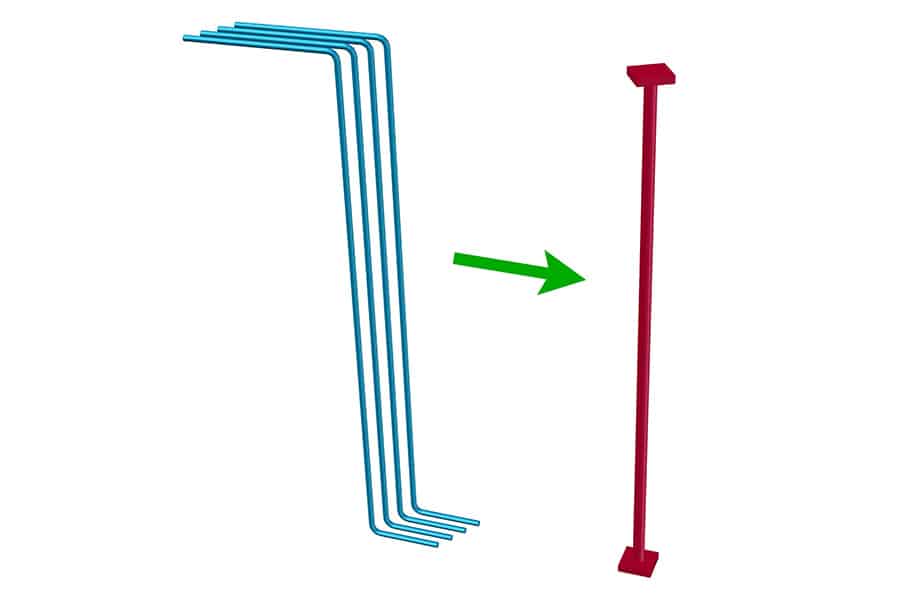

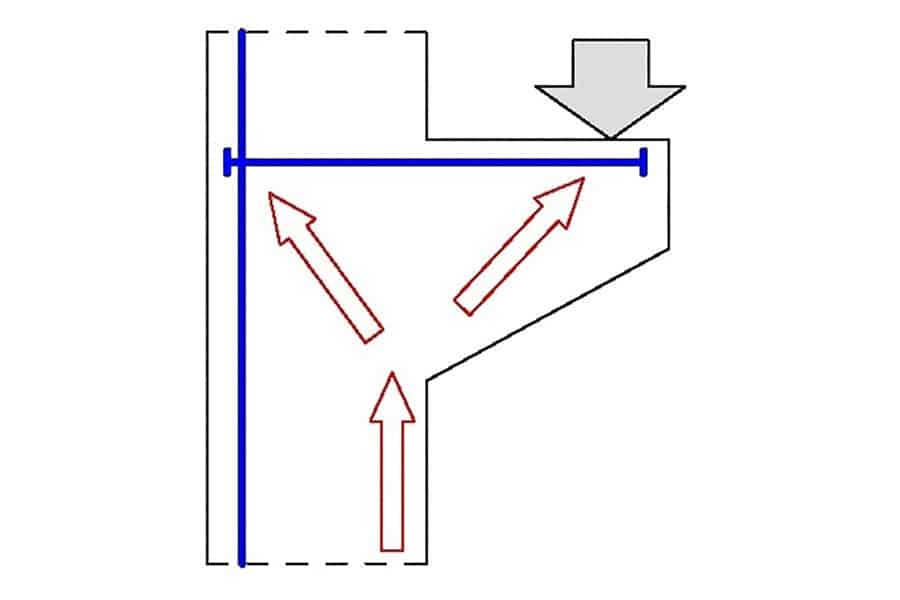
Sliding reinforcement
Sliding reinforcement must be anchored at both ends, with no development length. This requires effective anchoring, traditionally solved with brackets, anchored by hooks or bends. HRC100 Series T-headed bars are well suited for use as shear reinforcement because they have both sufficient anchoring capacity and are slender. Regardless of whether the bar has an HRC T-head at both ends or combines a T-head with a 90 or 180° bend at the other reinforcement end, it is fully anchored as required.
In cases where a large amount of shear reinforcement is required, the traditional accumulation of braces with small center or heart distances can be reduced by using fewer larger diameter T-headed bars. Overcrowded shear reinforcement is time-consuming to install, and in addition, the dense reinforcement can lead to problems when pouring the concrete. T-headed slide reinforcement also solves this problem and can be installed quickly and correctly, even by multiple
layers of horizontal reinforcement.
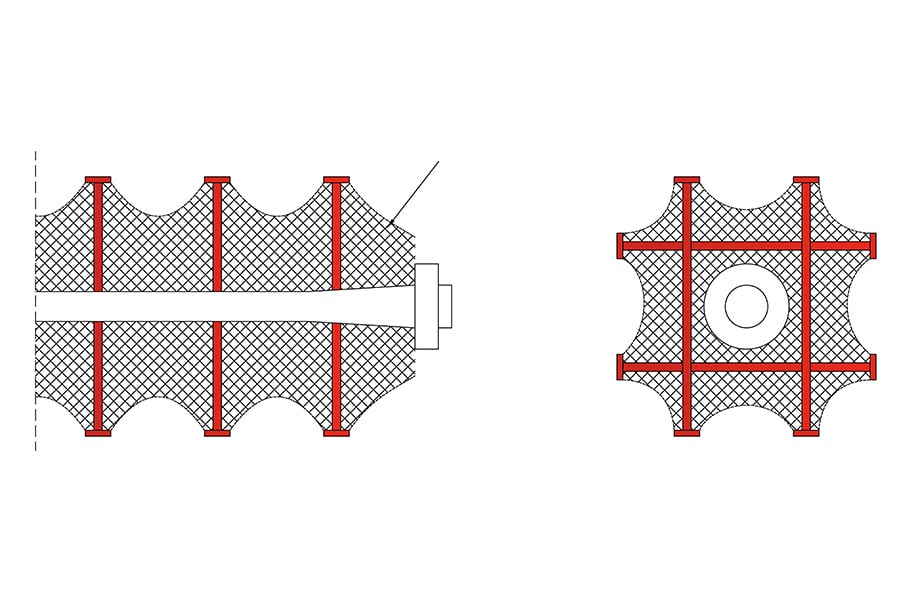
Enclosing reinforcement
Structural components with high compressive stresses must be enclosed. Typical examples are heavily loaded columns, sliding walls and the final anchorage of prestressing. For such components, an enclosing reinforcement must ensure the integrity of the concrete core by improving compressive strength and ductility (ductility). This is traditionally done with brackets and cross braces that enclose the longitudinal bars. The containment effect is achieved as the longitudinal bars press (through the brackets) against the concrete core. This normally requires many closely spaced brackets. For larger cross sections, additional transverse braces may be required. All brackets and cross connections must be adequately anchored, preferably with 180° hooks, which is labor-intensive and time-consuming to install. Moreover, dense reinforcement can once again impede concrete pouring. To solve this, T-headed bars can be applied: HRC T-head plates offer superior anchoring and are sufficiently slender to be used close to the concrete surface.
Unlike brackets, the containment effect is generated by the T-head plates pressing directly against the concrete. This leads to improved containment of the concrete. Furthermore, the absence of bending once again allows an almost free choice of rebar diameter and the possibility of alleviating congestion by using fewer bars of larger diameter.
Truss models
Truss models are often used to design and detail areas with changes in geometry (discontinuity zones/D area) or special loads (such as point loads). In the lattice approach, forces are transferred in nodes, which are connected by pressure and tension bars. Pressure bars are stress fields that develop according to boundary conditions. The challenge is to detail the reinforcement anchorage so that it accommodates the tensile lines of the model. T-headed bars, with their distinct anchoring point, are ideal for detailing junctions according to the design and force distribution of the truss model. As in other applications, the replacement of bends and hooks with T-heads allows a greater choice of reinforcement diameters. The slim geometry of the HRC100 T-heads simplifies detailing. The robustness of the HRC100 T-head plates and their connection to the bar provide the necessary anchoring capacity for force transfer in the node. These advantages, combined with the ease of handling and installation of T-head rods makes it an efficient application.
HRC Europe has nearly 40 years of experience in manufacturing and supplying T-headed bars for all types of infrastructure projects and construction problems. Combined with a local manufacturing facility in Flevoland, it can provide excellent customer service. HRC T-headed bars and rebar connectors are certified to applicable standards and carry the CE mark. HRC supports the design process by providing BIM tools.
Heeft u vragen over dit artikel, project of product?
Neem dan rechtstreeks contact op met HRC Europe NL.
 Contact opnemen
Contact opnemen

